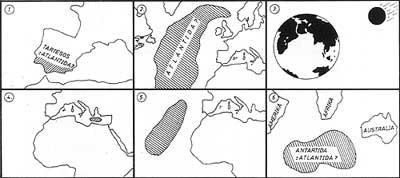Irish connection
1988/10/01 Elhuyar Zientzia Iturria: Elhuyar aldizkaria
XVII before Christ. In the eighteenth century there was a terrible volcanic explosion on the island of Santorini, in the Aegean Sea. This explosion in Greek mythology is related to the disappearance of the hypothetical continent Atlantis. This explosion went to. C. It has been determined that it occurred in 1628.
Historians and archaeologists had special interest in fixing when the Santorini explosion occurred. In fact, the rapid catastrophe of the Mycenic civilization of Crete has been related to the explosion. On the other hand, the interest of climatologists is to know how this explosion affected the climate outside the Mediterranean area.
The remains of the acidity caused by the explosion of Santorini have been found in the ice of Greenland. Once dated these ice, blast a. C. It happened in 1628 (±20 years). For the determination of this data, the rings of North America's longlife trees were analyzed, which are narrower. Period 1628-1626.
Thanks to the dating of Belfast University researchers Martin Munro and Mike Baillie, it has been confirmed that the Santorini explosion took place in 1628 BC. Analyzing the ring of oaks, these two researchers have been able to establish a dating chronology covering 7,272 years. Two trees from a Antrim swamp in northern Ireland have been analyzed. These trees had a very thin, almost invisible ring. the year 2005, consequence of the stress caused by the environment.
According to Irish researchers, dust clouds generated by the Santorini explosion caused heavy rains on the one hand (dust particles acted as an increase in rain) and on the other prevented solar radiation from reaching the earth's surface. Thus, the trees had a negative balance in that environment and could not grow as usual.

Gai honi buruzko eduki gehiago
Elhuyarrek garatutako teknologia



